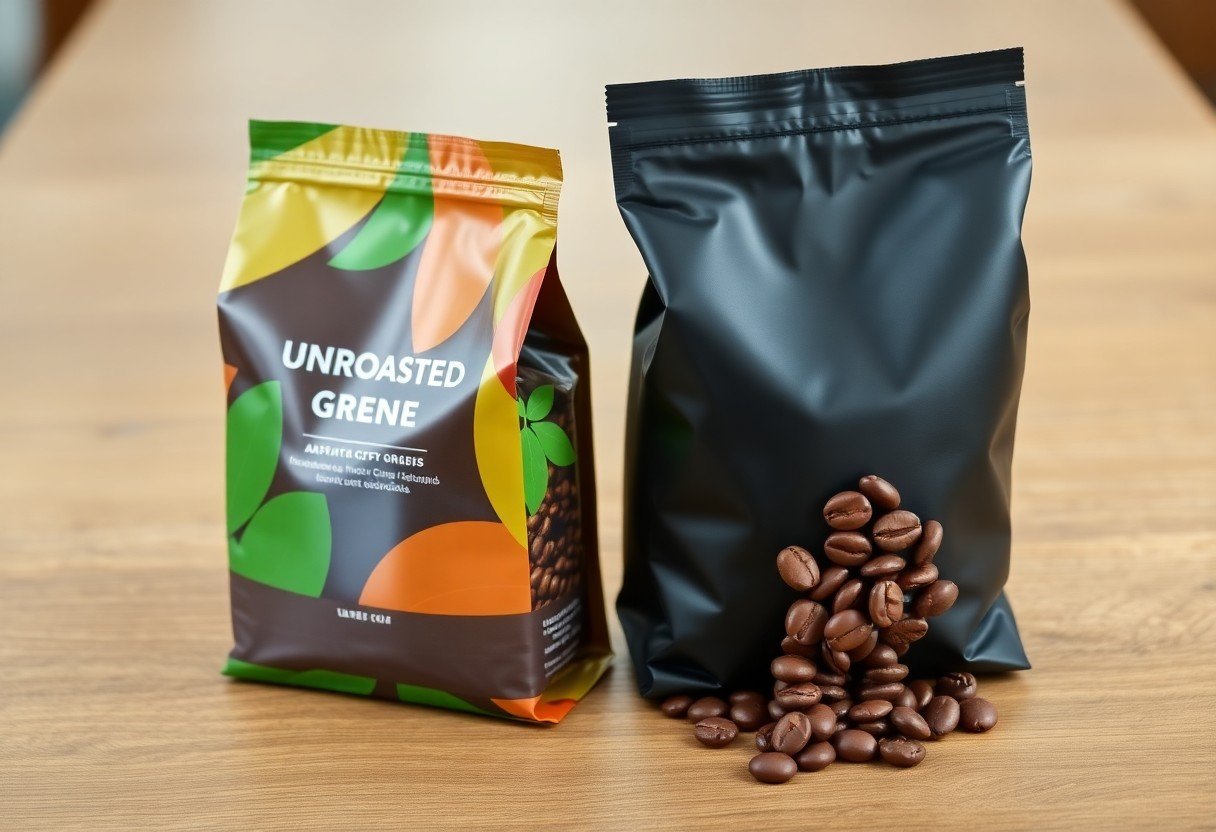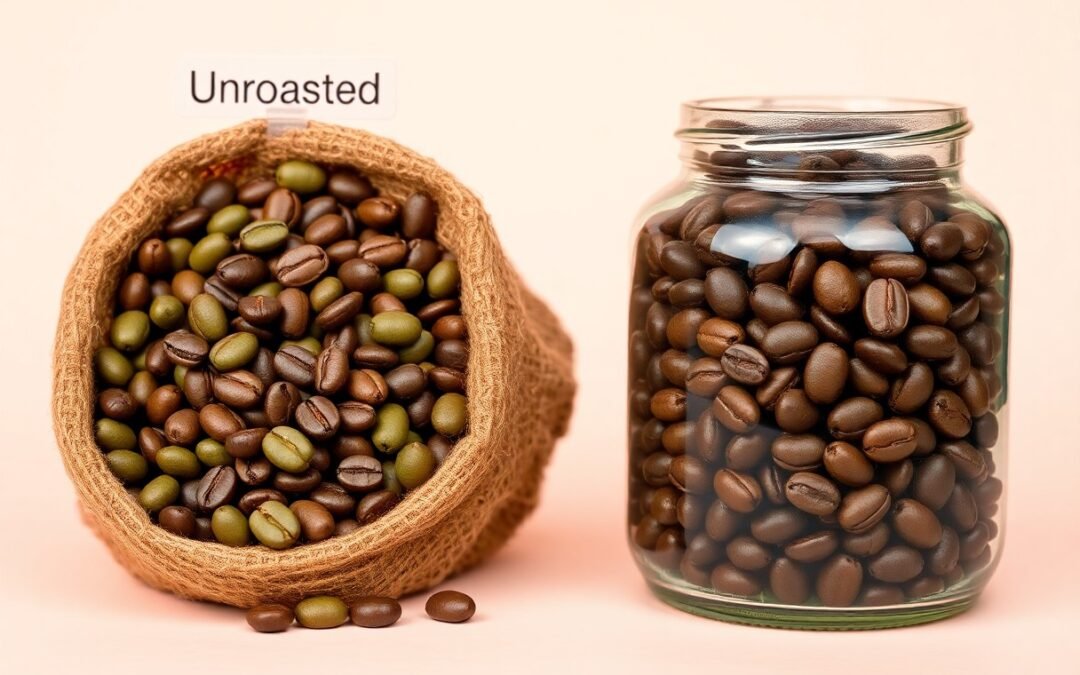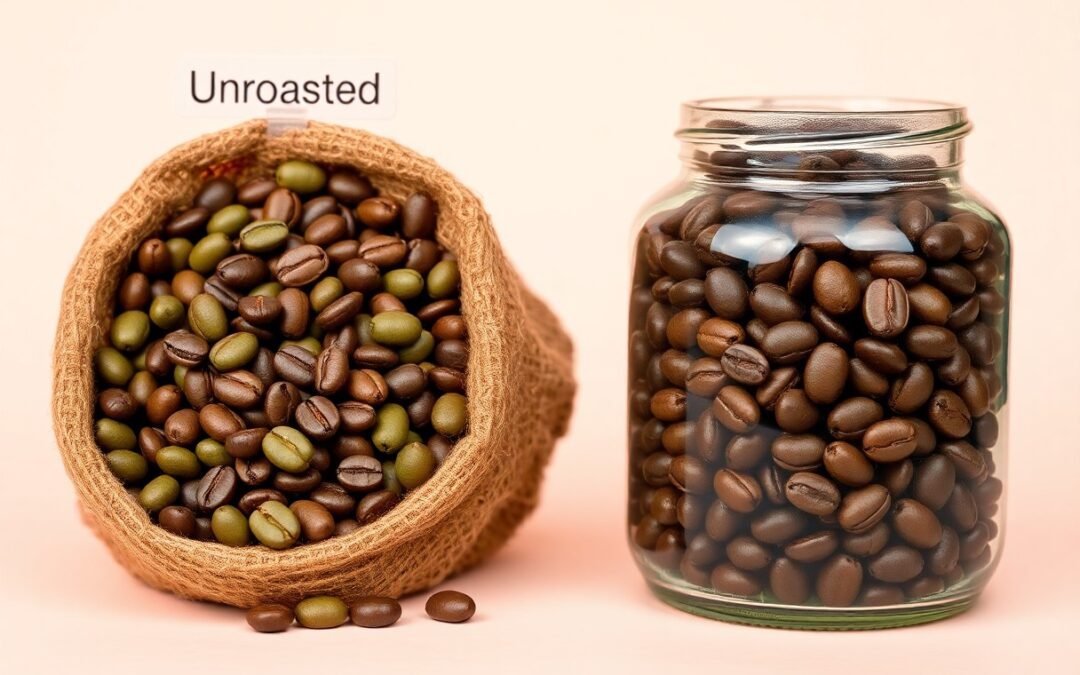There’s a significant distinction between roasted and unroasted coffee beans that impacts their longevity and flavor profile. Understanding these differences is crucial for coffee enthusiasts like you who want to maximize the freshness and quality of your brews. By exploring the storage life and characteristics of each type, you’ll be better equipped to make informed choices for your coffee consumption, ensuring every cup is as delightful as possible.
The Lifecycle of Coffee Beans: Roasted vs. Unroasted
The lifecycle of coffee beans is markedly different between the roasted and unroasted states. Unroasted beans, also known as green beans, can last for several years when stored properly, maintaining their flavor and aroma potential. However, once roasted, beans undergo rapid changes that lead to a decline in freshness. Typically, roasted beans are at their peak flavor for about 2 to 3 weeks, after which they start losing their unique characteristics due to oxidation and other factors that affect their volatile compounds.
Chemical Changes During Roasting
The roasting process initiates significant chemical transformations within coffee beans. During roasting, complex carbohydrates break down into sugars, proteins transform into aromatic compounds, and acids develop, enhancing the bean’s acidity and flavor profile. The Maillard reaction and caramelization are also key transformations that produce the desired brown color and rich flavors associated with your cup of coffee. These chemical changes are responsible for the diverse profiles you experience when you sip a freshly brewed cup.
Impact on Flavor and Aroma Preservation
Once coffee beans are roasted, their flavor and aroma elements begin to evolve. While roasting brings forth a plethora of delightful profiles, it also creates a timeline for preservation. Typically, freshly roasted beans maintain optimal flavor for a short period, after which they can begin to taste stale due to oxidization. For instance, aromatic compounds that contribute to your coffee’s aroma can dissipate within days, leading to a less vibrant cup. Storing roasted beans in airtight containers, away from light and heat, can extend their longevity but they’ll still never compare to the preservation potential of unroasted beans.
Impact on flavor and aroma preservation plays a critical role in your coffee experience. As roasted beans lose their volatile compounds, so do the intense flavors that make your morning brew exquisite. For example, a freshly roasted Ethiopian Yirgacheffe will initially present bright notes of citrus and floral undertones, but after a few weeks, these delicate flavors may fade into a dull cup with muted characteristics. In contrast, unroasted beans, if stored correctly, retain their flavor potential and can lead to a richer, more complex roasting experience if you look to roast them yourself. By understanding these nuances, you can make more informed choices about your coffee purchases and storage methods, ensuring each cup is as delightful as the last.
Shelf Life Showdown: Comparing Longevity
| Type of Bean | Shelf Life |
|---|---|
| Unroasted Beans | 2-3 years |
| Roasted Beans | 1-3 weeks (optimal freshness) |
Unroasted Beans: Stability and Storage Techniques
Unroasted beans boast impressive stability, allowing for a shelf life of 2-3 years when stored properly. You should keep these beans in a cool, dry place away from direct sunlight and moisture, ideally in a sealed bag or airtight container. Regularly checking for any signs of deterioration, such as off odors or mold, will ensure your supply remains fresh longer.
Roasted Beans: Factors Affecting Freshness
The longevity of roasted beans hinges on several factors, including the roast date, storage conditions, and exposure to air and light. For the freshest flavor, aim to consume your roasted beans within one to three weeks post-roast. Storing them in an airtight container at room temperature can help maintain their quality.
- Roast date is key; beans taste best soon after roasting.
- Avoid exposing beans to air, light, heat, and moisture.
- Grinding beans prior to use accelerates freshness loss.
- Recognizing these factors enables you to enjoy your coffee at its best.
Over time, roasted beans can lose their important oils and aromatic compounds, which are responsible for the rich flavors you crave. Factors such as temperature fluctuations and humidity can further impact their freshness. Ideally, you should store your coffee in a dark, cool place, sealed away from strong odors and light that can hasten the staling process.
- Bean quality is affected by the environment and storage techniques.
- Maintaining proper conditions can greatly extend the lifespan of your coffee.
- Recognizing these intricate influences lets you harness the full potential of each cup.

The Role of Packaging in Coffee Bean Longevity
Effective packaging plays a pivotal role in extending the shelf life of both roasted and unroasted coffee beans. Properly sealed packaging protects beans from exposure to detrimental elements such as air, light, and moisture, which can accelerate the deterioration of flavor and freshness. Packaging innovations, such as one-way valves and resealable bags, are designed to enhance longevity, keeping your coffee beans at their optimal quality for longer periods.
Gas Flushing and Vacuum Sealing Strategies
Gas flushing and vacuum sealing are two effective strategies used to preserve coffee bean freshness. In gas flushing, oxygen is replaced with nitrogen or carbon dioxide, effectively minimizing oxidation that causes stale flavors. Vacuum sealing, on the other hand, removes air from the packaging, preventing the beans from coming into contact with moisture and reducing the risk of mold and flavor loss. Both methods are important tools for maintaining the integrity of your coffee over time.
The Impact of Light and Humidity
Light and humidity significantly affect the quality of your coffee beans. Exposure to light can lead to oxidative reactions that degrade flavor compounds, while high humidity levels can promote mold growth and spoilage. Ideally, coffee should be stored in opaque, moisture-resistant containers to shield it from these damaging elements and retain its rich flavor profile.
In fact, studies have shown that coffee beans stored in clear containers exposed to light and moisture can lose up to 50% of their flavor within just a few weeks. The ideal storage environment is cool, dry, and dark, ensuring that your coffee maintains its freshness and distinct characteristics even for extended periods. Investing in quality storage solutions can make a noteworthy difference in the longevity of your coffee experience.
Practical Tips for Maximizing Freshness at Home
Maintaining the freshness of your coffee beans starts with a few factors that you can easily control at home. By adopting proper storage practices and handling techniques, you significantly prolong the life of your beans, ensuring optimal taste with each brew.
- Store beans in a cool, dark place away from moisture.
- Use an airtight container to protect against oxygen exposure.
- Purchase smaller quantities to keep your supply fresher longer.
- Consider keeping beans whole until ready to grind.
- Perceiving the difference in flavor quality will be noticeable.
Proper Storage Solutions for Both Bean Types
Your approach to storing unroasted and roasted coffee beans can vary. Unroasted beans need to be kept in a dry, cool environment to prevent spoiling, while roasted beans benefit from airtight containers to shield them from air and light, which can foster staleness.
- Seal unroasted beans in a mylar bag with a one-way valve.
- Use ceramic or glass jars for roasted beans to prevent moisture.
- Avoid plastic bags, as they can trap moisture.
- Store in a pantry or cupboard, not the refrigerator.
- Recognizing the optimal conditions can lead to better coffee experiences.
| Type of Bean | Optimal Storage Method |
|---|---|
| Unroasted | Seal in mylar bags; store in a cool, dry place |
| Roasted | Airtight containers; avoid light and air exposure |
| Both | Avoid moisture and extreme temperatures |
| Unroasted | Store away from strong odors |
| Roasted | Do not refrigerate; keep at room temperature |
Grinding Techniques to Preserve Quality
Your grinding method is another key factor affecting the quality of your coffee. Using a burr grinder ensures a uniform grind size, which helps in extracting flavors evenly during brewing. Adjusting the grind size to match your brewing method—coarser for French press, finer for espresso—can impact both aroma and taste.
Investing in a quality grinder can make a significant difference in flavor preservation. Whole beans retain freshness much longer than pre-ground coffee, as exposure to air leads to the loss of aromatic oils and imperative flavors. Grinding just before brewing amplifies the freshness, enhancing your coffee’s profile. Experimenting with different grind sizes and techniques can yield surprising results, encouraging a deeper appreciation for the complexities in your cup.
The Economic Implications of Bean Longevity
Your choice between roasted and unroasted coffee beans can significantly impact your wallet. While roasted beans may offer immediate gratification, unroasted beans provide the confidence of a longer shelf life. Investing in unroasted beans not only reduces waste and frequency of purchases but also allows you to roast your beans precisely to your taste. Understanding these economic factors can enhance your coffee experience while keeping your budget in check.
Cost-Effectiveness of Buying Roasted vs. Unroasted
Buying unroasted beans can be more cost-effective over time. While roasted beans typically have a higher upfront cost due to labor and processing, unroasted beans last longer, requiring less frequent purchases. You can also tailor your roasting to achieve that perfect flavor profile, resulting in less waste and greater satisfaction.
Market Trends and Consumer Preferences
If you look closely at coffee consumption patterns, you’ll find shifting preferences towards unroasted beans. More consumers are increasingly interested in the craft of coffee, from bean selection to roasting techniques. This trend is fueled by a growing appreciation for freshness, unique flavor profiles, and sustainability. Many coffee enthusiasts are investing in home roasting equipment, seeing it as an opportunity to be part of the coffee-making process and ultimately achieve a personal touch that ready-to-roast beans simply cannot provide. This shift reflects not just a taste preference but an evolving culture around coffee appreciation.
Final Words
The longevity of your coffee beans is significantly influenced by whether they are roasted or unroasted. If you choose to use unroasted beans, you’ll find their shelf life is much longer, allowing you to enjoy the freshest taste when you’re ready to roast. On the other hand, roasted beans provide rich flavors but have a shorter lifespan due to potential staling. Understanding these differences will help you make informed decisions about storage and freshness, ensuring that every cup you brew meets your expectations for quality.
FAQ
Q: What is the main difference in shelf life between roasted and unroasted coffee beans?
A: The primary difference in shelf life between roasted and unroasted coffee beans is significant. Unroasted (green) coffee beans can last for several years when stored properly, as they are more stable and less susceptible to degradation. In contrast, roasted coffee beans have a much shorter shelf life, typically lasting only 2 to 4 weeks before they start losing their optimal flavor and aroma. Proper storage in airtight containers and away from light and heat can help prolong the freshness of roasted beans.
Q: How do roasting processes affect the longevity of coffee beans?
A: Roasting processes affect the longevity of coffee beans by introducing various chemical changes that enhance flavors but also make them more vulnerable to oxidation. During roasting, moisture content decreases, and oils begin to develop, which contribute to the rich flavor profile of the coffee. However, these oils can go rancid over time, leading to a decline in quality. Generally, the higher the roast level (light, medium, dark), the faster the beans can age, with darker roasts typically losing freshness more rapidly than lighter roasts.
Q: What are the best practices for storing roasted and unroasted coffee beans to maximize their longevity?
A: To maximize the longevity of unroasted coffee beans, it is best to keep them in a cool, dark, and dry place, ideally in an airtight container to protect them from moisture and light. For roasted coffee beans, it’s recommended to store them in a similar manner but avoid refrigeration, as humidity and temperature changes can compromise their flavor. Using vacuum-sealed bags or jars with one-way valves can help reduce exposure to air, further extending the freshness. Consuming roasted beans within a few weeks of opening the package is advisable for the best taste experience.



